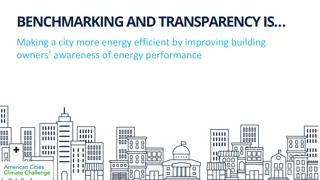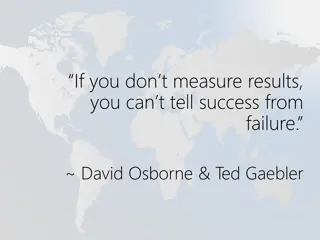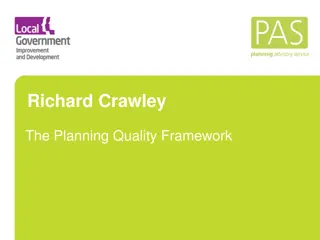
Benchmarking in Healthcare: Improving Quality and Reducing Costs
Benchmarking, the process of comparing organizational practices to identify best practices, is increasingly utilized by healthcare institutions to enhance product and service quality while cutting expenses. Learn about the history, purpose, advantages, and methods of benchmarking in this comprehensive seminar.
Download Presentation

Please find below an Image/Link to download the presentation.
The content on the website is provided AS IS for your information and personal use only. It may not be sold, licensed, or shared on other websites without obtaining consent from the author. If you encounter any issues during the download, it is possible that the publisher has removed the file from their server.
You are allowed to download the files provided on this website for personal or commercial use, subject to the condition that they are used lawfully. All files are the property of their respective owners.
The content on the website is provided AS IS for your information and personal use only. It may not be sold, licensed, or shared on other websites without obtaining consent from the author.
E N D
Presentation Transcript
www.studymafia.org Seminar On Benchmarking Submitted To: www.studymafia.org www.studymafia.org Submitted By:
Introduction What is Benchmarking History Who use Benchmarking Who initiate Benchmarking Who perform Benchmarking The Benchmarking Process
Purpose Types Advantages Disadvantages Conclusion Reference
Benchmarking--the process of establishing a standard of excellence and comparing a business function or activity, a product, or an enterprise as a whole with that standard--will be used increasingly by healthcare institutions to reduce expenses and simultaneously improve product and service quality.
Benchmarking is simply the comparison of one organization's practices and performance against those of others. It seeks to identify standards, or "best practices," to apply in measuring and improving performance.
First used formally by Rank-Xerox Corporation Now standard practice among large corporations and other business & industry leaders No single benchmarking process has been universally adopted Benchmarking itself is becoming big-business Current efforts to use benchmarking in education and government
In the West most large and highly successful organizations use best practice benchmarking as a tool to continually learn and improve. The resources needed to carry out repeated best practice benchmarking projects properly and in a way that maximizes the learning to be gained from the experiences can be considerable; hence it is used more frequently within large organizations.
The motivation for benchmarking often determines who in the organization begins the process. For example, if the motivation is to justify the IS/IT budget, the CIO or the manager responsible for the budget will likely initiate the process. Alternatively, the mandate may come from someone such as the President or CEO who has the ultimate authority for allocating budgetary resources.
Benchmarking is generally performed by a team of employees, sometimes with the assistance of an outside consultant who has had previous experience with benchmarking and the process or processes being benchmarked.
Planning Analysis Integration Action
Knowing You Knowledge of the Industry Leaders or Competitors Incorporating the Best Gaining Superiority
Strategic Benchmarking Performance Benchmarking Process Benchmarking Functional Benchmarking Internal Benchmarking External Benchmarking International Benchmarking
Benchmarking helps identify the gaps between the organization that is undertaking the benchmarking assessment and best practice. Undertaking benchmarking can lead to improvements being incorporated into processes and systems delivering gains in efficiency and effectiveness Benchmarking can help align improvement activity with strategic goals and objectives Improves organizational quality Leads to lower cost
A major limitation of benchmarking is that while it helps organizations in measuring the efficiency of their operational metrics, it remains inadequate to measure the overall effectiveness of such metrics. A bigger disadvantage of benchmarking is the danger of complacency and arrogance. Finally, many organizations make the mistake of undertaking benchmarking as a stand-alone activity.
Benchmarking can be as complex as re-engineering or as simple as thumbing through the quarterly reports of organizations and making comparisons. Although organizations must use benchmarking with some caution, it can be informative and foster a spirit of openness and cooperation from indirect competitors (Graham, 1997).
www.studymafia.org www.google.com www.wikipedia.org






















